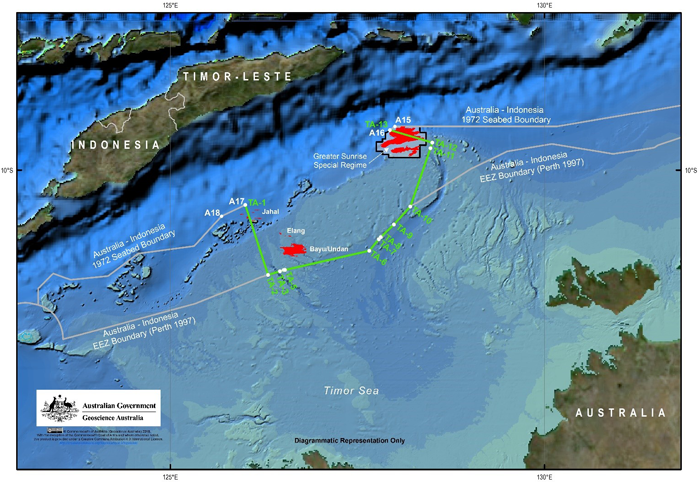Australia, Timor-Leste Treaty 'To Unlock Greater Sunrise'
Australia and Timor-Leste have ended their long-running dispute by signing a treaty in New York March 6 which establishes permanent maritime boundaries and could pave the way for the development of the Greater Sunrise gas fields.
“As well as maritime boundaries, the treaty establishes a framework to jointly develop the Greater Sunrise gas fields for the benefit of both countries,” the two countries said in a joint press release.
Australia’s foreign affairs minister Julie Bishop, the Attorney-General Christian Porter and minister for resources Matthew Canavan said in a joint media release: “Australia and Timor-Leste have agreed that we will exercise joint rights over the seabed containing the Greater Sunrise field. Seventy or eighty per cent of the revenue from developing Greater Sunrise will flow to Timor-Leste, depending on the final development concept to be agreed upon by Timor-Leste and Australia”.
“This will require the support of the private sector oil and gas joint venture companies whose capacity to develop and operate the project will depend on its economic viability,” they said.
The treaty also puts in place transitional provisions to ensure certainty and security for affected offshore petroleum operations in the Timor Sea, they added.
The two countries have agreed to share upstream revenue in the ratio of 30% to Australia and 70% to Timor-Leste in the event that the Greater Sunrise fields are developed by means of a pipeline to an LNG processing plant in Timor-Leste, and in the ratio of 20% to Australia and 80% to Timor-Leste if the fields are developed with a pipeline to an LNG processing plant in Australia, according to Australia’s Department of Industry, Innovation and Science.
The fields, which are 150 kilometres southeast offshore Timor Leste and 450 km northwest of Darwin, Australia, were discovered in 1974 and hold gross contingent resources of 5.13 trillion ft3 of gas and 225.9mn barrels of condensate, their 33.44% joint venture partner Woodside Energy says. ConocoPhillips (30%), Shell (26.56%) and Osaka Gas (10%) also hold stakes in the joint venture.
Timor-Leste's chief negotiator Kay Rala Xanana Gusmao said: "History is made today as Timor-Leste signs a treaty on permanent maritime boundaries that establishes, for the first time, a fair border between our two countries, based on international law."
Australia and Timor-Leste both thanked the five eminent Commissioners of the United Nations Conciliation Commission, chaired by Ambassador Peter Taksoe-Jensen of Denmark, for their great dedication and professionalism in helping to forge an agreement.

Map courtesy of Australia's Dept of Foreign Affairs and Trade which says: The map shows the location of the maritime boundary which is established by the Treaty Between Australia and the Democratic Republic of Timor-Leste Establishing Their Maritime Boundaries in the Timor Sea. The Treaty was signed by Australia and Timor-Leste on 6 March 2018 in New York. The Southern boundary is a seabed and water column boundary (from points TA-5 to TA-10). The western segment of the southern boundary line (TA5 to TA-6) runs slightly above the median line, while the eastern segment of the southern boundary (TA-6 to TA-10) runs along the median line. The eastern and western lateral boundaries are seabed boundaries only (from points TA-1 to TA-5, and TA-10 to TA-13



